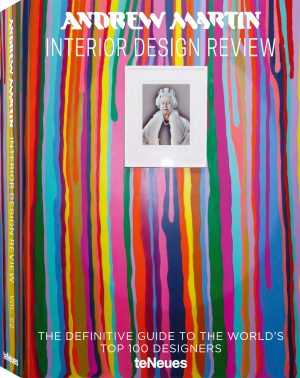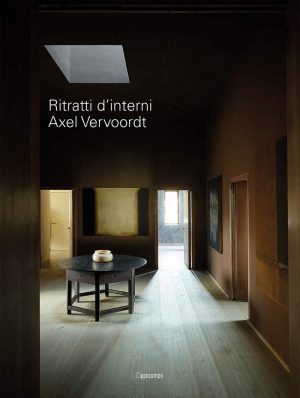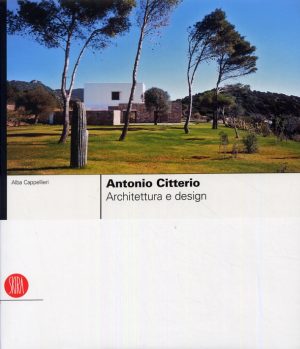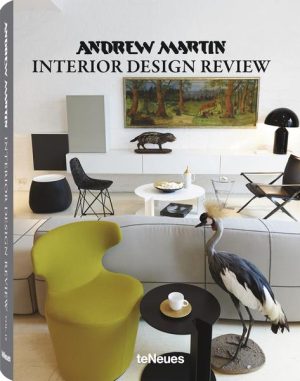di Kristina Krasnyanskaya – Alexander Semenov
SOVIET DESIGN. From Constructivism To Modernism. 1920-1980
From Constructivism to Art Deco and back to Avant-garde and Bauhaus: Transformations of Soviet interior Design through six Decades
- First-ever comprehensive survey of Soviet interior design across seven decades, drawing on archives that were inaccessible until recently
- Features a wealth of previously unpublished images and documents alongside essays by expert authors
- A reference book and unique source for scholars, dealers, collectors, and lovers of design
The Soviet Union has left a vast heritage in interior design that is largely unknown in the West. Other than architecture and graphic or product design, interior design from the Soviet era has not yet been thoroughly investigated. For the first time ever, this book offers a comprehensive survey of the country’s interior design culture between revolutionary avant-garde and late Soviet modernism. Drawing on archives that were inaccessible until recently and featuring a wealth of previously unpublished material, it documents the achievements of seven decades in the former socialist empire.
Soviet design is often discredited as massive, non-ergonomic and monotonous. Yet a remarkable variety of original styles have emerged behind the iron curtain. The 1920s were marked by bold exploration and experiments at Vkhutemas and by constructivism, rationalism, and suprematism. Early in Stalin’s reign constructivism was heavily criticised and post-constructivism and Soviet neo-classicism appeared alongside what became known as ‘agitational furniture’, inspired by the regime’s propaganda. The 1930s brought Soviet Art Deco and eventually Stalinist Empire, which has produced some of the Soviet Union’s most iconic buildings. In the late 1950s, after Stalin’s death, the last Soviet ‘big style’ originated modernist and functionalist furniture, mass-produced to fit the small apartments in the Khrushchyovka multi-unit housing developments that were built in cities on a large scale. The 1960s mark the Golden Age of Soviet interior design, showing again influences by the early Soviet Avant-Garde and the Bauhaus, while most of the visionary work of a new generation of designers in the 1970s and 1980s remained unrealised.
> Kristina Krasnyanskaya is an art historian and founder of Heritage Gallery in Moscow. She curated the 2015 exhibition Soviet Design: From Constructivism to Modernism: 1920s-1960s in collaboration with Moscow’s Shchusev State Museum of Architecture in Moscow. Alexander Semenov is an expert in the field of Soviet design and a research associate at Saint-Petersburg Stieglitz State Academy of Art and Design. He has written extensively on Soviet furniture and interior design.
Veste editoriale: Cartonato
Formato: 24,5×30
Pagine: 448
Immagini a colori: 257
Immagini b/n: 171
Lingua: GB
Anno: 2020
ISBN: 9783858818461
Potrebbero interessarti anche:
di Kristina Krasnyanskaya – Alexander Semenov
SOVIET DESIGN. From Constructivism To Modernism. 1920-1980
From Constructivism to Art Deco and back to Avant-garde and Bauhaus: Transformations of Soviet interior Design through six Decades
- First-ever comprehensive survey of Soviet interior design across seven decades, drawing on archives that were inaccessible until recently
- Features a wealth of previously unpublished images and documents alongside essays by expert authors
- A reference book and unique source for scholars, dealers, collectors, and lovers of design
The Soviet Union has left a vast heritage in interior design that is largely unknown in the West. Other than architecture and graphic or product design, interior design from the Soviet era has not yet been thoroughly investigated. For the first time ever, this book offers a comprehensive survey of the country’s interior design culture between revolutionary avant-garde and late Soviet modernism. Drawing on archives that were inaccessible until recently and featuring a wealth of previously unpublished material, it documents the achievements of seven decades in the former socialist empire.
Soviet design is often discredited as massive, non-ergonomic and monotonous. Yet a remarkable variety of original styles have emerged behind the iron curtain. The 1920s were marked by bold exploration and experiments at Vkhutemas and by constructivism, rationalism, and suprematism. Early in Stalin’s reign constructivism was heavily criticised and post-constructivism and Soviet neo-classicism appeared alongside what became known as ‘agitational furniture’, inspired by the regime’s propaganda. The 1930s brought Soviet Art Deco and eventually Stalinist Empire, which has produced some of the Soviet Union’s most iconic buildings. In the late 1950s, after Stalin’s death, the last Soviet ‘big style’ originated modernist and functionalist furniture, mass-produced to fit the small apartments in the Khrushchyovka multi-unit housing developments that were built in cities on a large scale. The 1960s mark the Golden Age of Soviet interior design, showing again influences by the early Soviet Avant-Garde and the Bauhaus, while most of the visionary work of a new generation of designers in the 1970s and 1980s remained unrealised.
> Kristina Krasnyanskaya is an art historian and founder of Heritage Gallery in Moscow. She curated the 2015 exhibition Soviet Design: From Constructivism to Modernism: 1920s-1960s in collaboration with Moscow’s Shchusev State Museum of Architecture in Moscow. Alexander Semenov is an expert in the field of Soviet design and a research associate at Saint-Petersburg Stieglitz State Academy of Art and Design. He has written extensively on Soviet furniture and interior design.
Veste editoriale: Cartonato
Formato: 24,5×30
Pagine: 448
Immagini a colori: 257
Immagini b/n: 171
Lingua: GB
Anno: 2020
ISBN: 9783858818461
Potrebbero interessarti anche:
FAQ
Leggi le domande frequenti per avere maggiori informazioni sui metodi di pagamento, la spedizione e molto altro
Per acquistare uno o più libri è sufficiente compilare l’apposito modulo al quale si accede dalla scheda di ciascun libro.
Qualora i volumi ordinati non siano tutti immediatamente disponibili, il nostro staff si riserva di contattarti via mail per concordare le modalità di spedizione (A: invio immediato dei volumi presenti a magazzino e successivo invio di quelli mancanti – B. invio unico dopo il ricevimento da parte nostra dei volumi mancanti).
N.B. la fattura deve essere esplicitamente richiesta al momento dell’ordine, comunicando la ragione sociale completa di partita IVA e/o Codice Fiscale e Codice SDI.
Ai sensi dell’Art.5 del relativo Decreto, l’acquirente ha il diritto di recedere dal contratto e restituire i volumi ordinati entro 10 giorni lavorativi, purchè nel medesimo stato in cui li ha ricevuti. Il diritto di recesso dovrà essere esercitato mediante invio di lettera raccomandata A.R. a: LIMOND S.a.s. – via Arnolfo di Cambio 24/A – 37138 Verona (VR) – entro il termine di 10 (dieci) giorni lavorativi dal ricevimento dei volumi.
Tutti i resi dovranno essere autorizzati da Limond S.a.s (tel. +393472455641) con l’assegnazione di un numero di autorizzazione alla resa. Le spese di spedizione saranno interamente a carico del cliente e non si accetteranno pacchi in contrassegno.
Al ricevimento dei volumi, e verificata la loro integrità, Limond S.a.s. provvederà, entro 10 (dieci) giorni, ad accreditare il cliente del valore dei volumi restituiti.
La tempestività nell’evasione dell’ordine è determinata dalla disponibilità della merce ordinata. In caso di immediata disponibilità l’ordine verrà evaso entro 2 giorni lavorativi. Qualora uno o più libri non dovessero essere presenti a magazzino possono essere ordinati su richiesta; il nostro staff informerà il cliente, via mail, circa i tempi necessari per l’evasione dell’ordine.
Pagamento tramite bonifico bancario anticipato alle coordinate comunicate in fase di check-out
I costi di invio (che comprendono imballo e spedizione) per libri e riviste in ITALIA sono i seguenti:
Servizio postale: 3-5 gg (per merce immediatamente disponibile presso il nostro magazzino)
- Spedizioni per acquisti fino a 62,00€: €5,50
- Spedizioni per acquisti fino a 120,00€: €9,50
- Spedizioni per acquisti superiori a 120,00€: Gratuite
Per una quotazione dei costi di invio in EUROPA o per spedizioni internazionali vengono richiesti i seguenti dati:
- Nome/Cognome
- Indirizzo (comprensivo di Codice postale)
- Telefono (meglio se Cellulare)
Alla conferma di accettazione, verranno comunicate coordinate bancarie/account PayPal da utilizzare per il pagamento. Un Una volta ricevuto, verrà evasa la spedizione inoltrando notifica e tracciabiltà.










